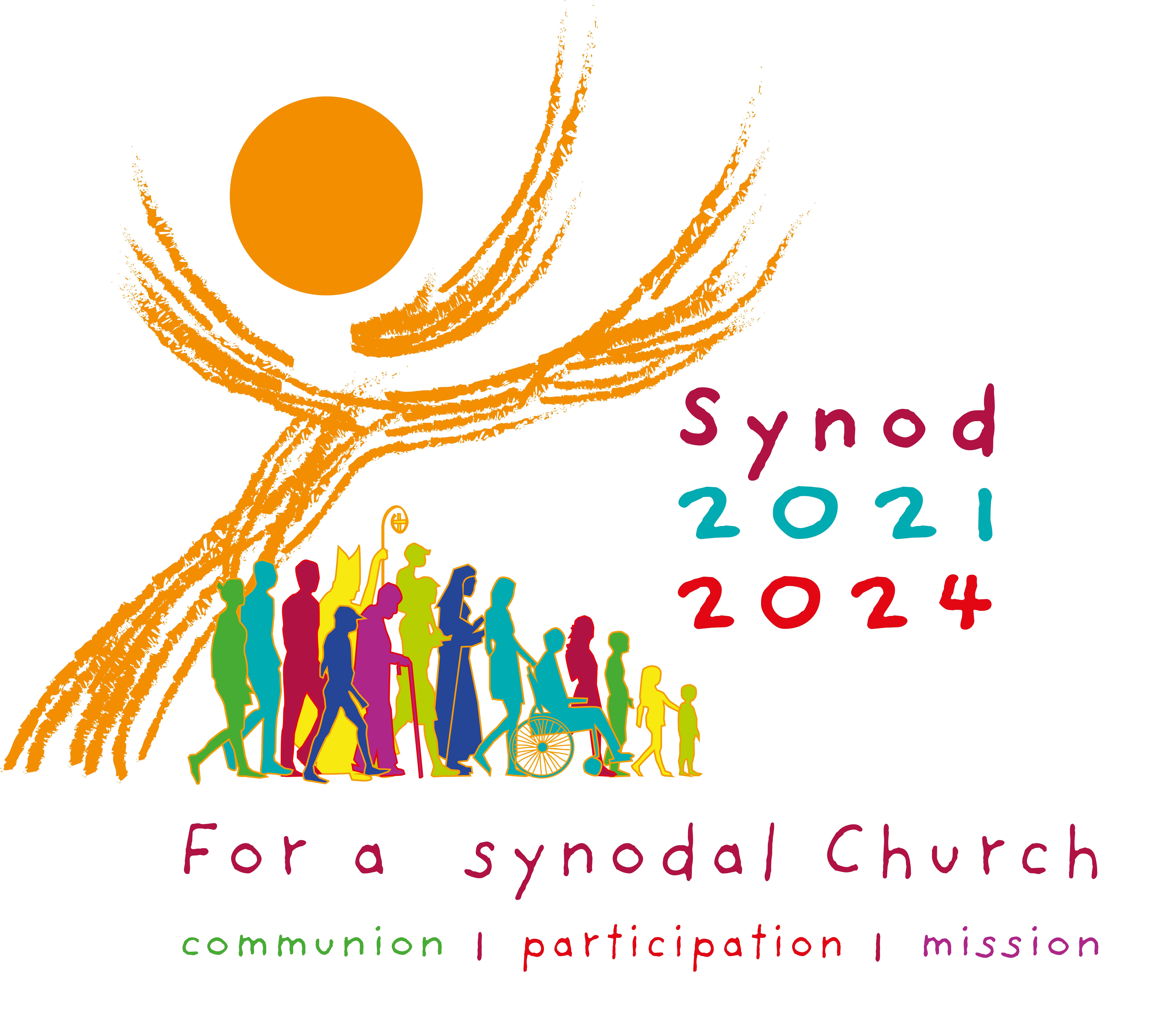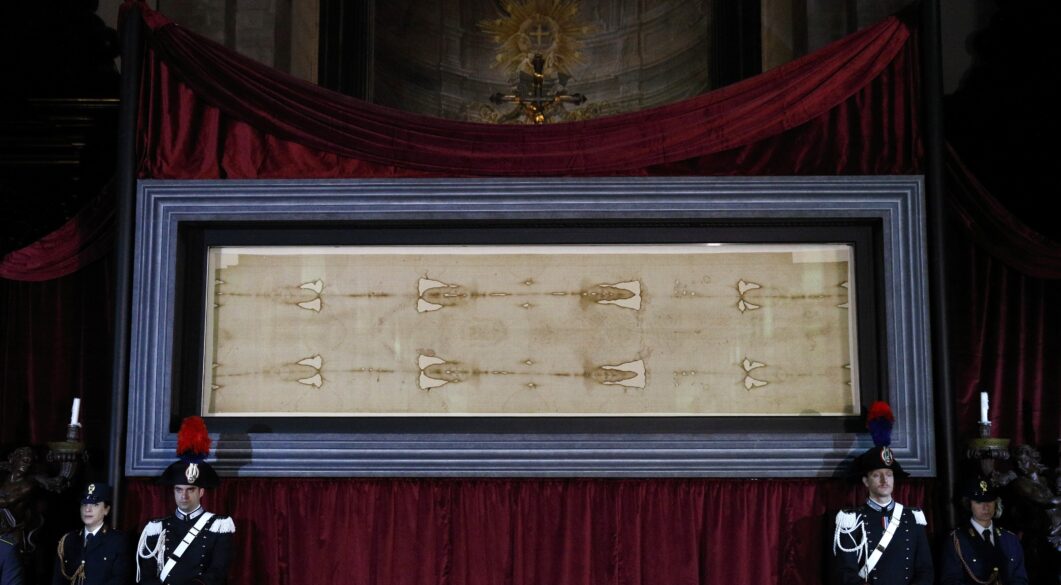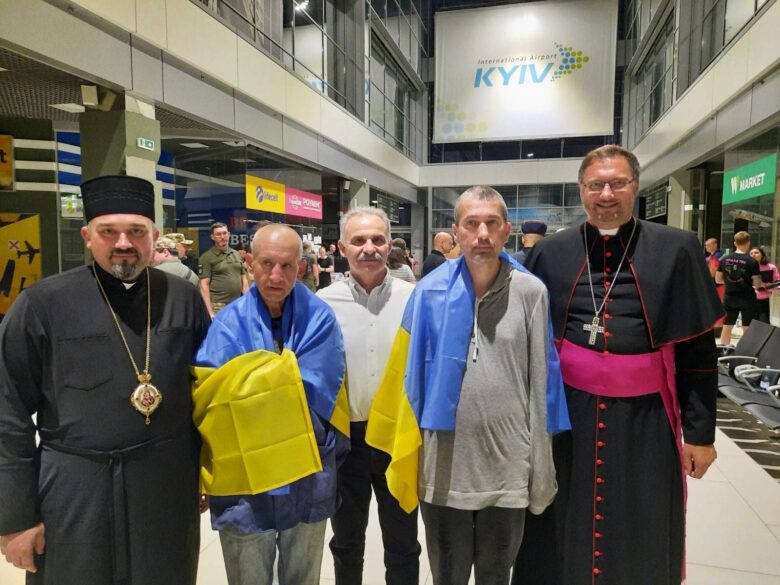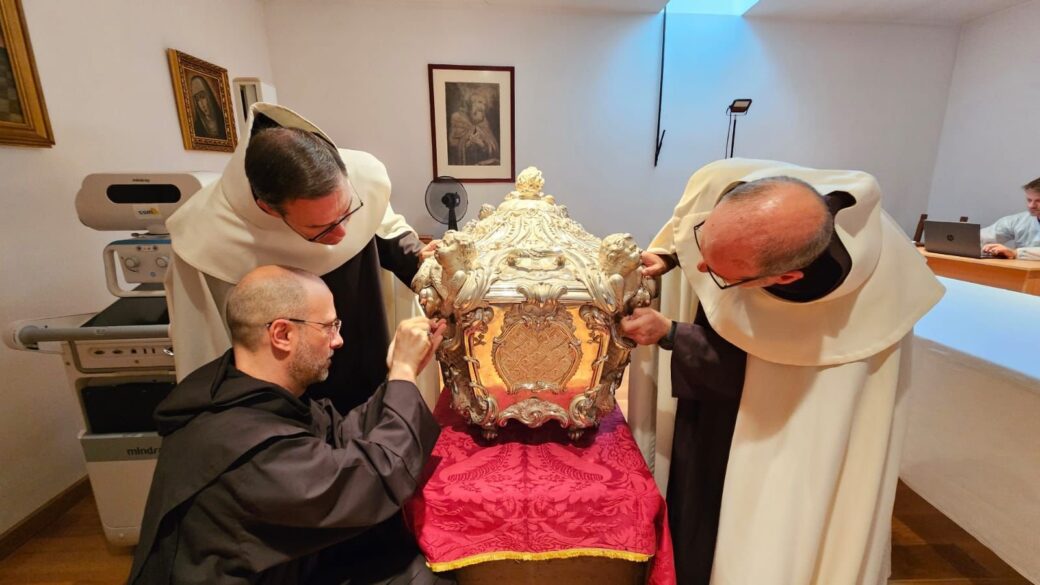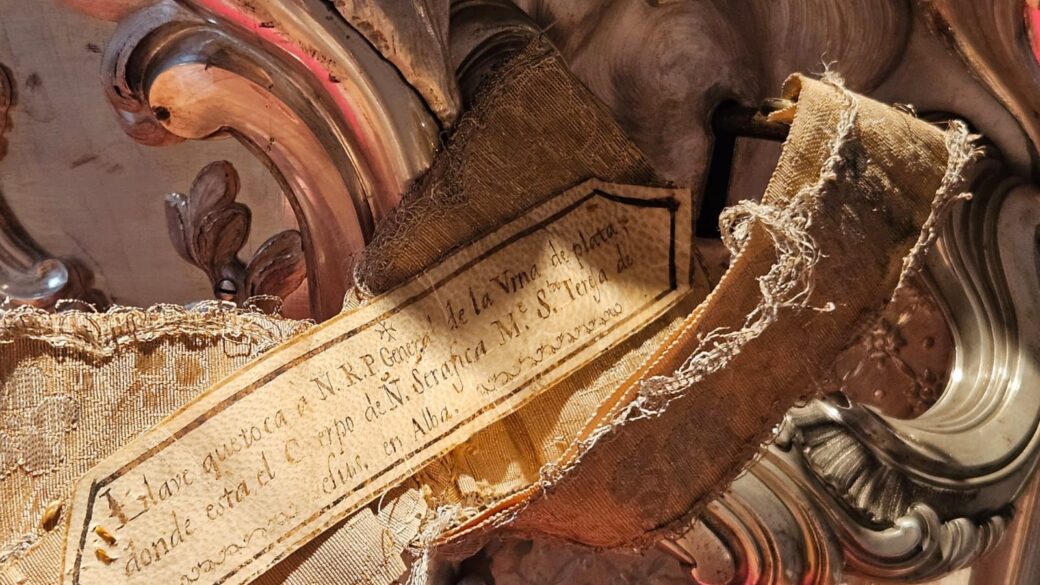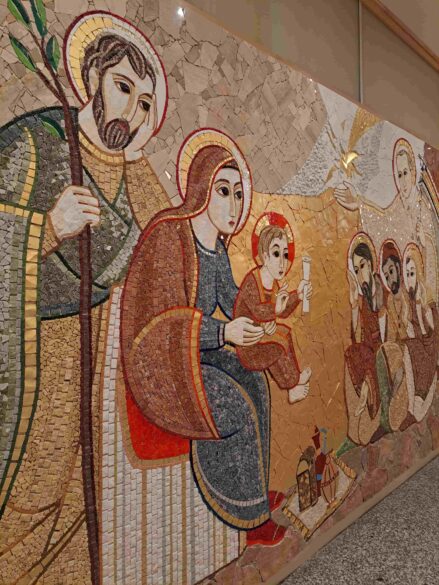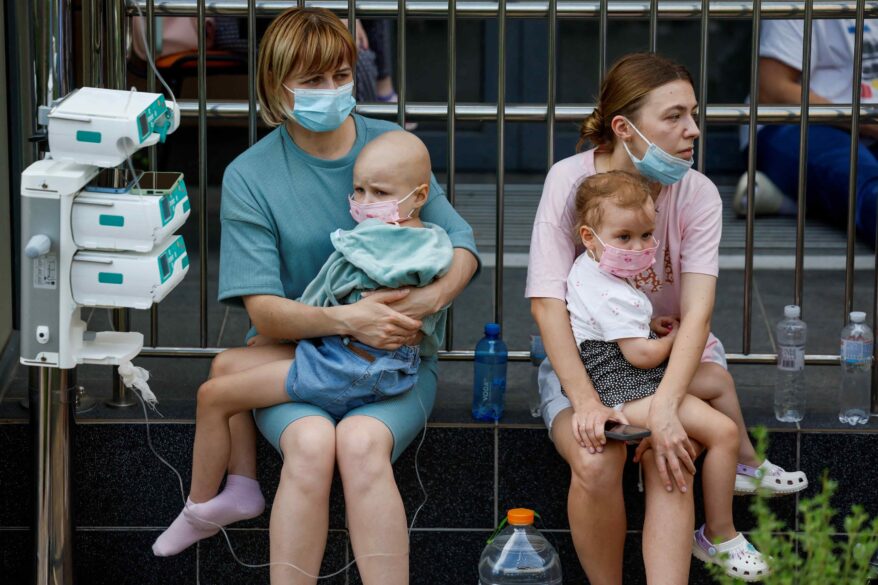Por Eduardo Campos Lima
(OSV News) – Los dos primeros días de ponencias del 53 Congreso Eucarístico Internacional en Quito, Ecuador, contrastaron las penurias que actualmente enfrentan muchas personas en diferentes partes del mundo con las respuestas proféticas que la Iglesia puede dar en tiempos de crisis.
Los oradores que intervinieron en este evento, que se desarrolló del 8 al 15 de septiembre, compartieron sus puntos de vista sobre las duras realidades que viven millones de personas en la actualidad, desde las víctimas inocentes de la guerra en Ucrania hasta las familias de inmigrantes que emprenden viajes traicioneros desde Sudamérica a Estados Unidos y acaban encontrando más exclusión y violencia.
En su intervención, Rodrigo Guerra, secretario laico de la Pontificia Comisión para América Latina, resumió la mayor parte de las actuales “heridas del mundo”, como vienen llamando los organizadores del congreso a los problemas sociales que pueden ser sanados por el sentido de fraternidad que proporciona la Eucaristía.
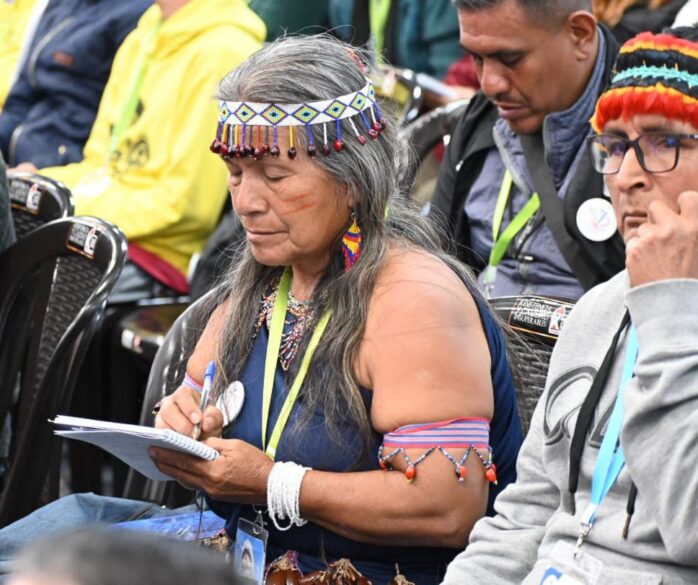
Él mencionó la desigualdad social y el aumento de la brecha entre ricos y pobres, algo especialmente alarmante en América Latina; la falta de cuidado de la Tierra, con todas las consecuencias ecológicas que esto conlleva; y la inexistencia de fraternidad y perdón cuando se trata de desacuerdos políticos.
“Muchos de nuestros países están desgarrados por tremendas polarizaciones por oposiciones ideológicas gravísimas”, dijo Guerra, añadiendo que el populismo – tanto de derecha como de izquierda – es el resultado indeseable de esas fracturas sociales.
También mencionó la inmigración masiva – y la ausencia de una acogida adecuada por parte de los países de destino – como uno de los retos más complejos de la actualidad.
Leyden Rovelo-Krull, que dirige la Oficina del Ministerio Hispano de la Diócesis de Kansas City-St. Joseph, Missouri, compartió su experiencia de trabajo con inmigrantes que acaban de ser liberados por el Servicio de Inmigración y Control de Aduanas de Estados Unidos tras un largo viaje desde Sudamérica o Centroamérica hasta la frontera entre Estados Unidos y México.
Recordó que en 1983 la Conferencia de Obispos Católicos de EE.UU. afirmó que la presencia hispana y latina en la vida eclesial estadounidense era “una bendición de Dios para la Iglesia y para nuestro país”, dado que esos inmigrantes habían revitalizado parroquias en todo el país.
A pesar de ello, un alto porcentaje de ciudadanos estadounidenses ha manifestado su oposición a la llegada de migrantes latinoamericanos, incluidos fieles católicos.
Rovelo-Krull describió los sufrimientos de algunas de las personas que ha conocido durante su trabajo, como una madre que perdió a su hija de 5 años mientras cruzaba Centroamérica y tuvo que enterrarla por el camino, en un punto que no sabe exactamente dónde está.
El trauma de tantas familias inmigrantes puede ser comparable al de las víctimas de la invasión rusa a Ucrania, descrita vívidamente por el obispo auxiliar Hryhoriy Komar, de la eparquía católica de Sambir-Drohobych, ciudad cercana a la frontera con Polonia. Contó a la audiencia que al menos 20.000 niños ucranianos han sido secuestrados por los ocupantes rusos.
“Ahora en el mundo hay 6 millones de refugiados ucranianos y 10 millones de refugiados dentro del país. Muchos pueblos y ciudades ya desaparecieron, sepultando bajo ruinas a la gente”, afirmó.
Los rusos han ocupado gran parte del país, por lo que no es posible saber cuántos ucranianos fueron asesinados, añadió el obispo Komar.
Para muchos participantes, esas descripciones les llevaron a reflexionar sobre sus propias realidades. Ese fue el caso del obispo Geovanni Paz, de Latacunga, Ecuador.
“Algunos de esos temas me impactan mucho, como los desafíos de la inmigración, que también se notan en mi diócesis”, dijo a OSV News.
Mons. Paz afirmó que de vez en cuando salen autobuses que llevan decenas de personas al norte con gente de las pequeñas comunidades andinas de su diócesis que buscan una vida mejor.
“Antes recibíamos grupos de 1.200 niños para la catequesis y ahora somos sólo 400”, dijo, y agregó que muchos niños son dejados por sus padres para vivir con sus abuelos, y terminan abandonando la escuela e involucrándose con las drogas y la delincuencia.
“Algunas de esas personas son deportadas a Ecuador apenas llegan a Estados Unidos. Nos cuentan las violaciones de derechos humanos que sufren en el camino”, lamentó monseñor Paz.
Mientras el Papa Francisco defiende los derechos de los inmigrantes, la mayoría de las sociedades los han estado rechazando, dijo el obispo.
“Tenemos que ser una Iglesia profética. De lo contrario, estaremos siendo cómplices”, argumentó.
Al día siguiente hubo presentaciones sobre fuertes voces proféticas. El 10 de septiembre, los obispos latinoamericanos hablaron de algunas de las figuras más veneradas en la historia de la Iglesia católica de la región. Es el caso del obispo ecuatoriano Leônidas Proaño (1910-1988), que dedicó su vida a los indígenas y campesinos, y de San Óscar Romero (1917-1980), arzobispo salvadoreño asesinado por el régimen militar.
El padre Juan Carlos Garzón, secretario general de la CEI, dijo que “en los momentos más difíciles Dios nos envía los profetas de nuestro tiempo”.
“Queríamos descubrir las heridas del mundo y luego ver después cómo Cristo viene a redimirnos”, explicó el padre Garzón.
(Eduardo Campos Lima escribe para OSV News desde São Paulo.)

